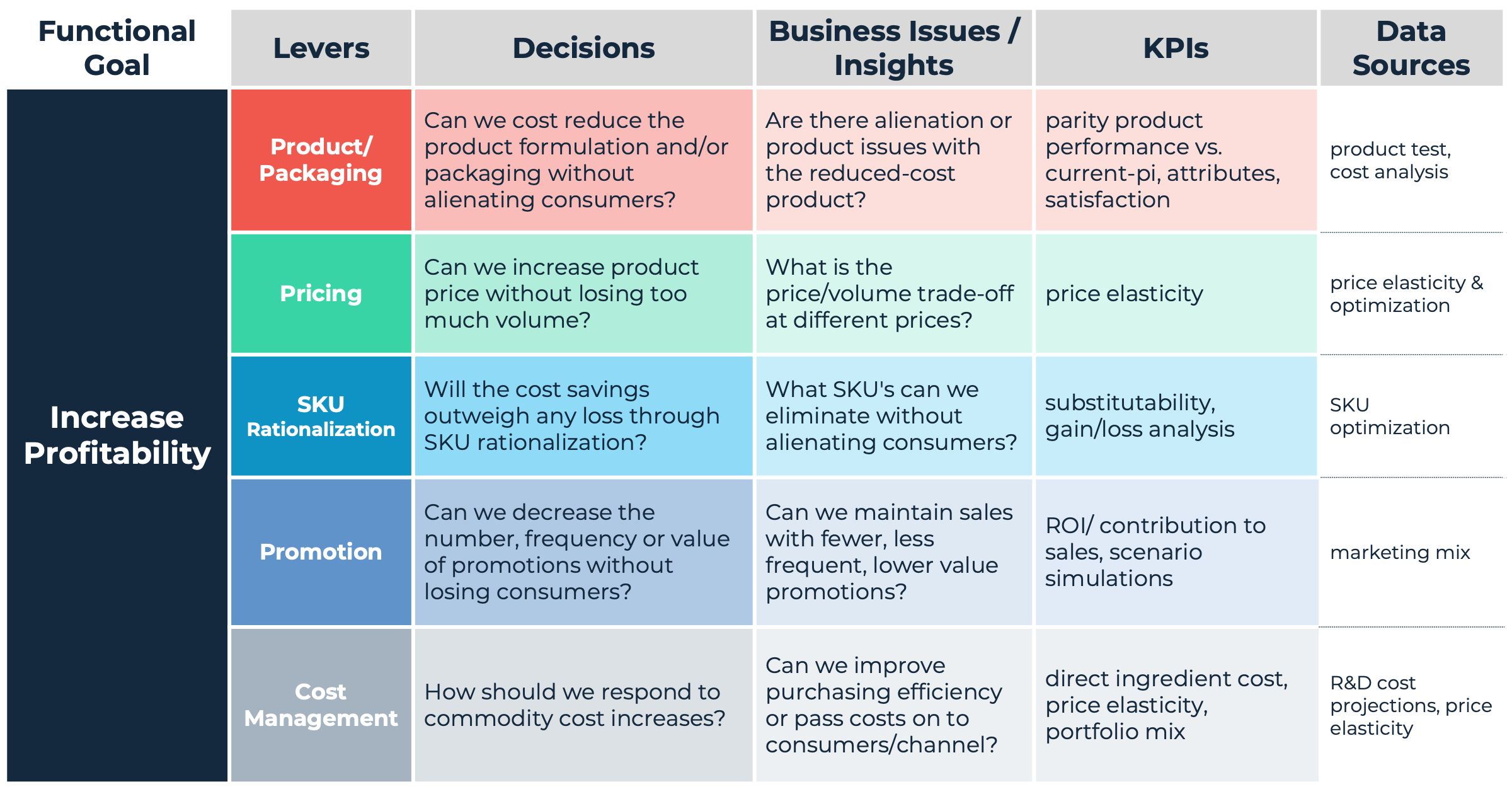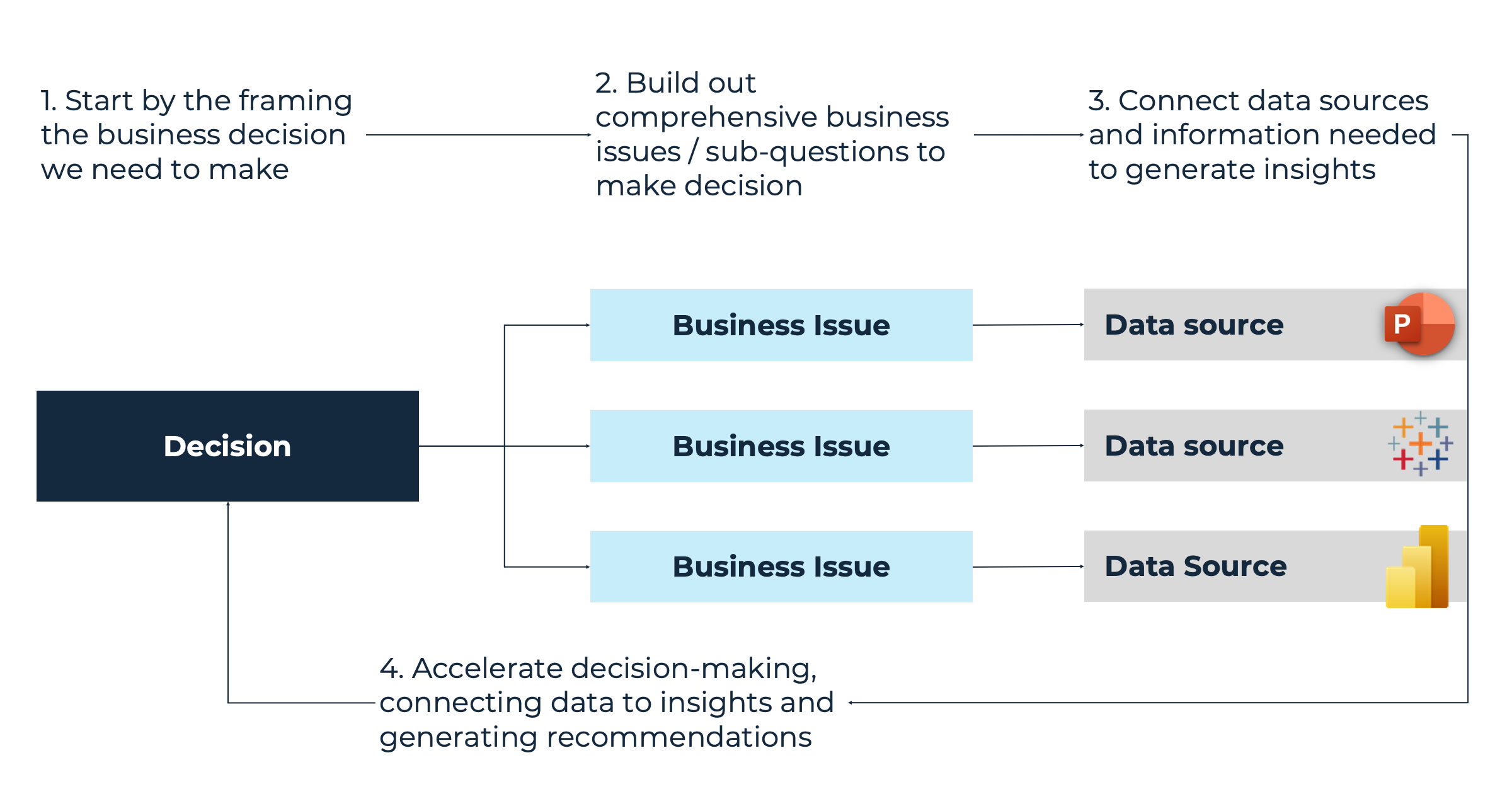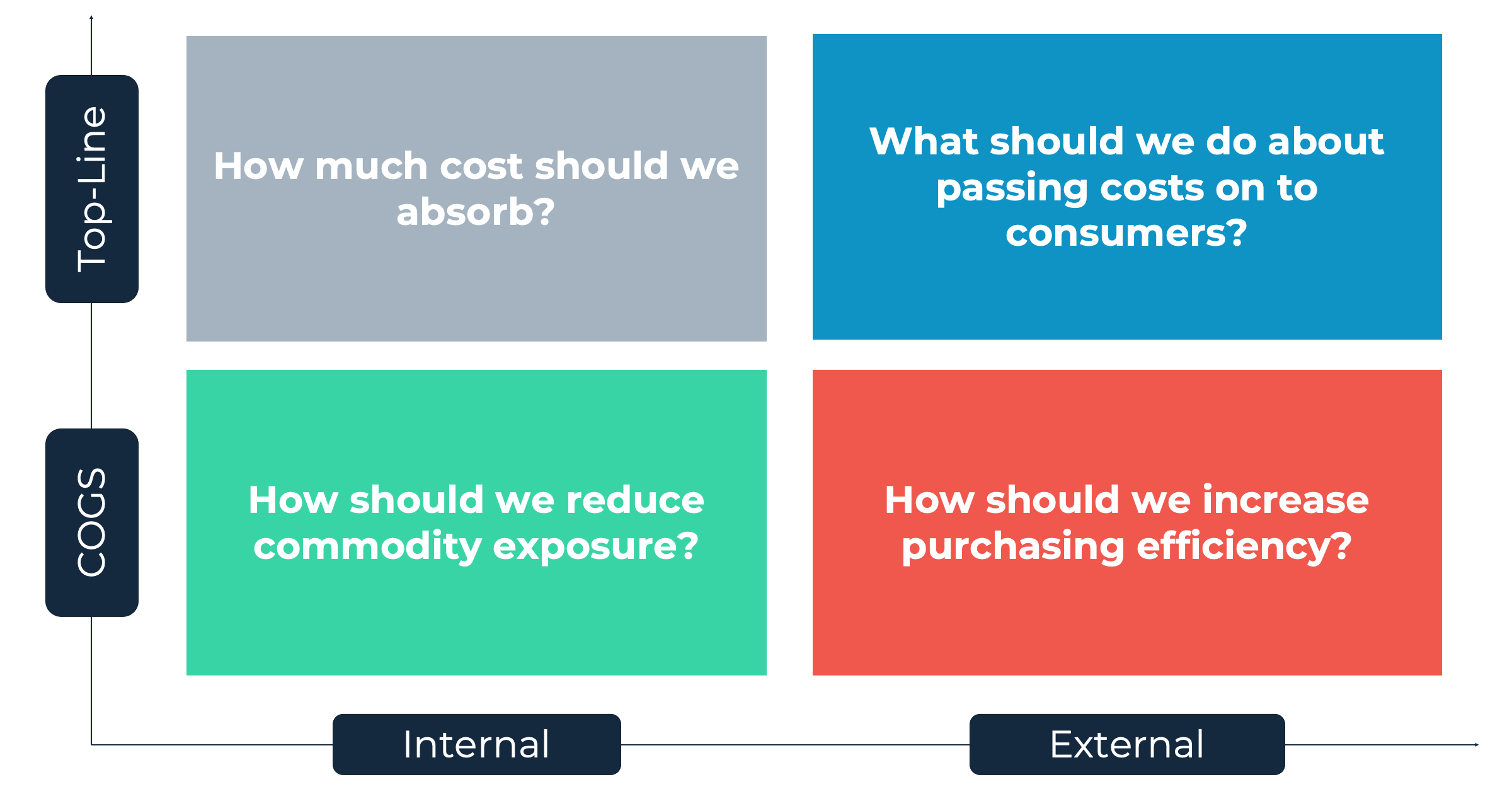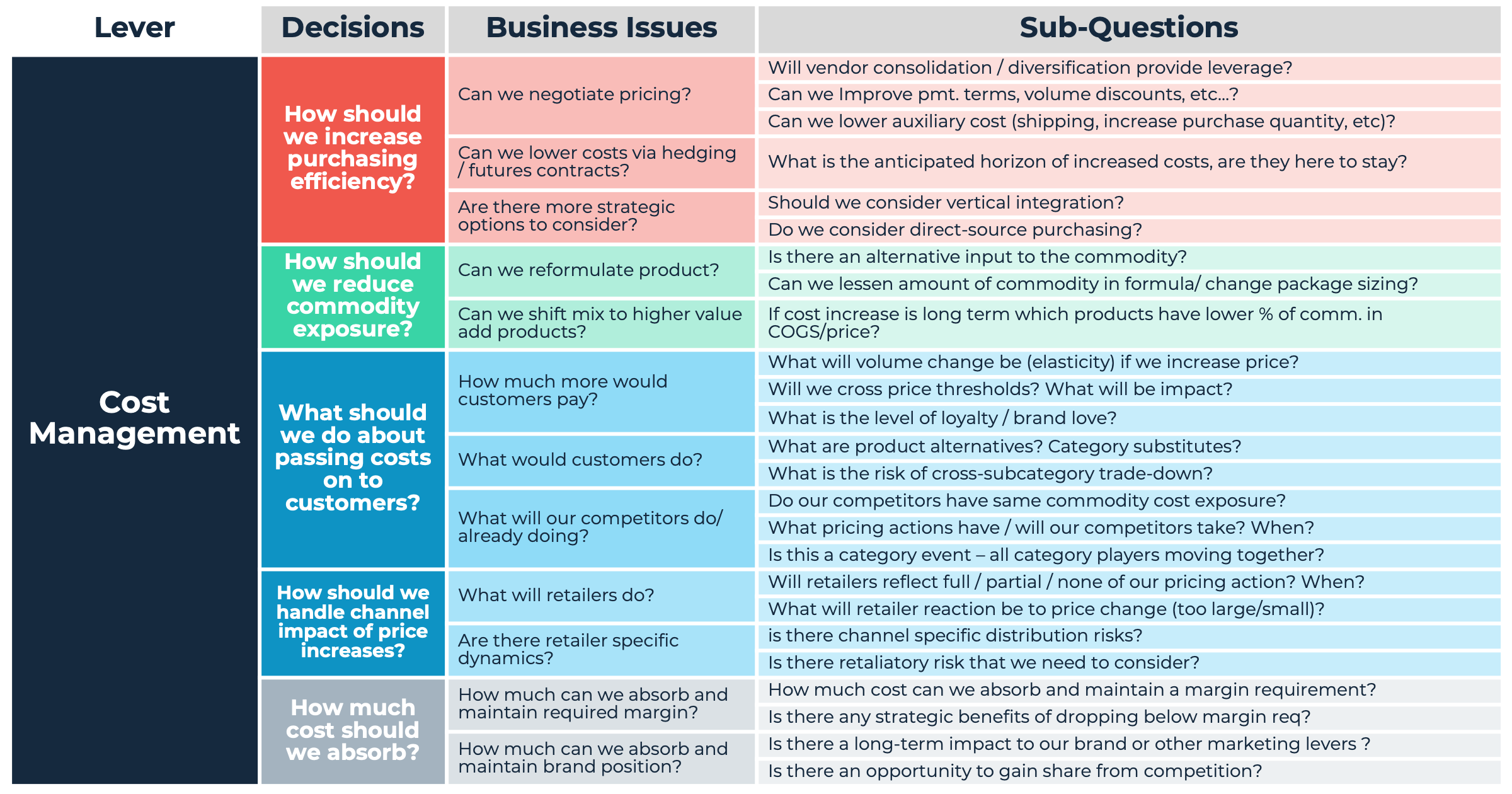How To Drive CPG Growth From Within Using The Decision-Back Approach

The consumer packaged goods (CPG) industry is experiencing unprecedented change. CPG leaders were already struggling to navigate a more volatile, uncertain, complex and ambiguous (VUCA) commercial landscape with fewer resources while leading an increasingly transient workforce. Covid-19 has only accelerated these changes.
Decisions are made to respond to change or to make change happen. That’s why this increased rate of change places CPG companies under unprecedented decision-making pressure.
To adapt to this new normal, CPG organizations must rethink their decision-making processes. The need to respond to consumers faster demands an accelerated time-to-decision. Under budget pressures, managers will have to develop high-quality recommendations using existing tooling and resources. Organizations will have to capture decision-making knowledge along the way to learn from near-term results and improve performance in the long run.
Mapping The Most Critical Decisions
Executives align their strategies, initiatives and resources around fundamental business goals; chief among them for CPG leaders is the never-ending pursuit of growth. This drive for CPG growth results in goals to increase market share, incremental sales/volume, and profitability, and each goal defines a set of levers that decision-making leaders can pull to achieve growth.
For example, suppose increased profitability is the target. In that case, managers may reduce packaging or other input costs or increase price to improve gross margin. These levers highlight the critical decisions that drive growth.
The decision-back approach maps those decisions as the central framework for coordinating the people involved and the data needed to inform analyses and generate better decisions. Let’s explore an example of how that works. Note: a comprehensive white paper explaining the approach is available for download (PDF).
Using the decision-back approach to map out the critical decisions to increase profitability involves these steps:
- Identify the Levers: Intuitively, CPG leaders know that to increase profits, they must increase sales and hold or improve margins and decrease costs and reduce unproductive products while improving gross and operating margins. The specific levers involved include product/packaging, pricing, SKU rationalization, advertising and consumer/trade promotion, and cost management.
- List the Decisions: For each lever, list the critical decisions to be made. For example, for product and packaging, ask, “Can we reduce the product formulation and/or packaging without alienating customers?” Similarly, for pricing, the company must decide, “Can we increase product price without losing too much volume?”
- Describe the Business Issues: Break each decision down into a decision tree of key business issues requiring analysis-based insights, the key performance indicators (KPIs) to inform those insights, and the data sources to provide metrics for those KPIs.
CPG leaders can use these comprehensive decision maps to know what decisions to make, what information is required, and which teams should be involved.

Creating The Decision Trees
Once you’ve mapped the critical decisions, begin building out trees for each one. This process involves four key steps.

1. Frame the critical decision to be made.
Write out the decision in question form. Does the question get to the heart of an issue, or is it part of a bigger problem we are trying to solve? Is it actionable? It is good practice first to write down the context for the choice. What is the problem, complication, or change we are facing? Then write the question with open-ended framing, such as “How should we [solve the problem]?” or “What should we do about [the problem]?”
When taking a problem-centric view of decisions, we often find that what seems like one overarching decision is a system of interrelated choices. For example, when looking at the cost management lever, many CPG companies face the overarching decision, “How should we respond to commodity cost increases?” That is a large and complex challenge, and it is essential to consider all the significant factors involved. Breaking such decisions apart into their fundamental elements helps avoid the mistake of leaping to the wrong conclusions and ensures that decision-makers consider a complete set of insights and choices.
To do this, develop a framework. Addressing rising commodity costs includes “Top Line” choices such as “How much cost should we absorb?” or “What should we do about passing costs on to customers?” Cost inputs also require COGS choices such as “How should we reduce commodity exposure?” and “How should we increase purchasing efficiency?” These four critical decisions holistically address all key elements that drive the overarching problem of commodity cost increases.

2. Create the decision tree.
Once you’ve framed each decision, break it down into the key business issues that drive it to create more digestible questions that individuals and teams can address. For instance, the decision, “How should we increase purchasing efficiency?” is handled by answering, “Can we negotiate pricing?”, “Can we lower costs via hedging / futures contracts?” and “Are there more strategic options to consider?”
We can further break these business issues down into sub-questions if needed. More detailed sub-questions reduce gray areas and guide team members to gather relevant analyses and insights to answer these questions.

An important note: By “decision tree,” I mean a logical visual representation of decision drivers (i.e., business issues and related sub-questions) and not a statistical model.
3. Connect data sources needed to generate relevant insights.
Only start connecting data required after creating a complete decision tree that describes all key business issues and sub-questions. This clarity makes data collection, research and analysis activities far more efficient. Most importantly, once the decision trees are in the hands of decision-makers, this complete set of business issues ensures that the insights generated by the team support recommendations that directly address the critical decisions faced by brands and businesses.
4. Facilitate cross-functional collaboration to provide insight-driven recommendations.
The first three steps are about structuring and collecting information in a decision tree to help make a recommendation that considers all key factors. Then, cross-functional team members are assigned specific “branches” to complete. Next, the team works together to synthesize information, come to conclusions, and recommend the solution to the decision. Finally, the decision-maker uses the recommendation to make the best decision possible.
Make No Small Plans, But Start Small
Transforming your organization’s decision-making is a worthy goal, and it is also likely to trigger some resistance at first. Creating a comprehensive decision map will help put handles on the overall problem and build intellectual buy-in. However, the most common push-back I hear is, “This makes sense, but we can’t forget about the politics and emotions that go into decisions.”
People are people, and corporate politics are nothing new — many decision-makers approach critical decisions with a view of what is best for themselves and the organization. However, it is still up to the decision-maker to deliver results in line with company goals. So to get started, focus on just one critical decision to create a case study that shows how valuable the decision-back can be. The resulting transparent decision-making process will speak for itself with more buy-in, stronger execution and better results.
